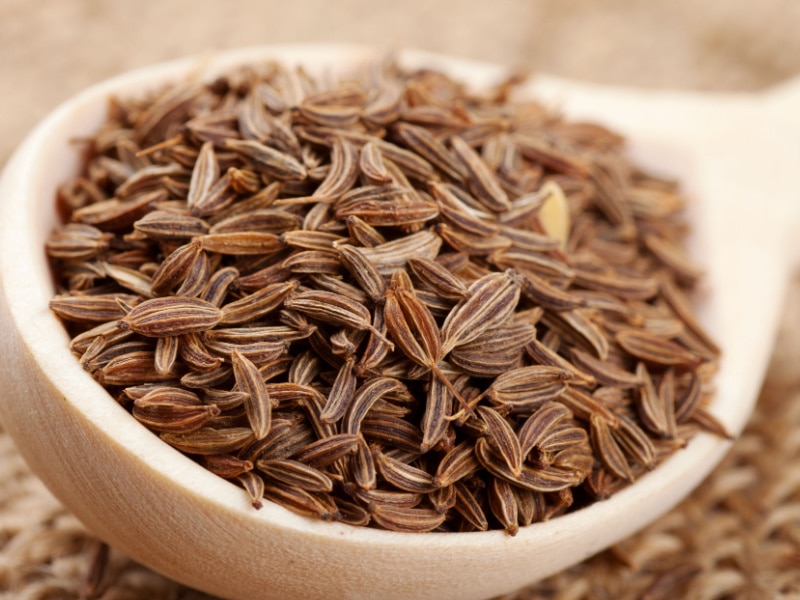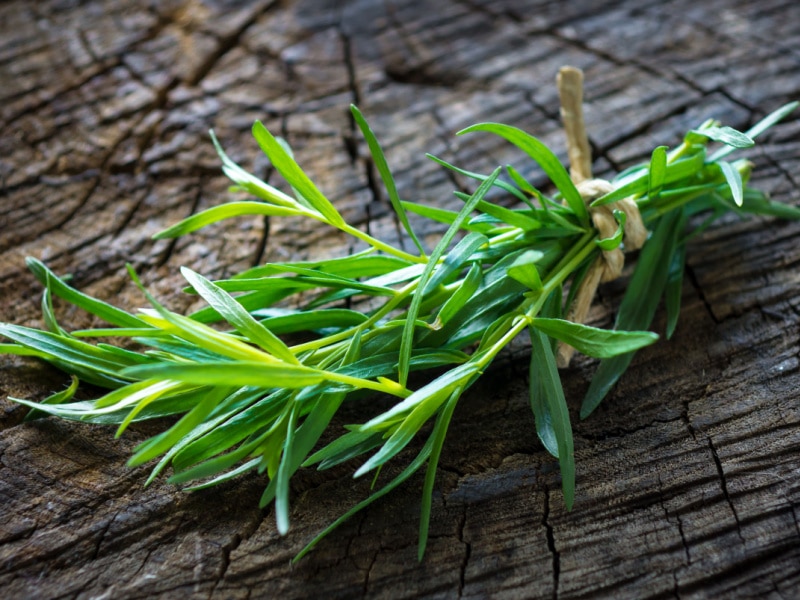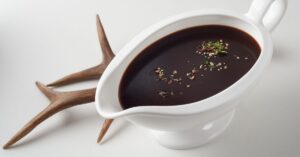From cumin and basil to curry powder, here are my top substitutes for coriander.
While they don’t have the same flavor, they all work well in most dishes.

Top 10 Coriander Substitutes
Coriander (and cilantro) comes from the Coriandrum sativum plant.
And here in the States, coriander typically refers to the seed, while cilantro is the leafy stem.
And yes, they do have different tastes.
- Cilantro is fresh and floral, with light and sweet citrussy notes.
- Coriander seeds are warm and spiced, with a hint of curry and citrus.
Due to its uniqueness, finding the best substitutes for coriander seeds can be tricky.
So instead of finding a taste-alike, let’s use something that’ll complement the dish and give off some of the same flavors.
Oh, and just in case you’re after substitutes for cilantro leaves, I’ve added a couple of fresh options too.
Coriander Seeds vs. Ground Coriander
In this article, I’ll give substitutions for coriander seeds, since that’s what most people think of when they hear “coriander” (in the States).
But, of course, coriander is available in seed and ground form.
In general, you can swap 1 teaspoon of seeds for 3/4 teaspoon of ground coriander. And that will be true of the 1:1 substitutions below.
Best Dry Substitutes for Coriander Seeds

1. Caraway Seeds
Caraway is your best bet if you want something that tastes almost like coriander.
It’s kind of bittersweet and noticeably nutty. However, you’ll also get notes of anise and citrus.
Like coriander seeds, caraway comes in ground form and as seeds.
And to be honest, if you use this instead of coriander, you probably won’t notice the difference.
How to Substitute: Swap 1 teaspoon of coriander seeds with 1 teaspoon of caraway seeds.

2. Cumin
When you don’t have that all-important coriander but need a finishing touch for a meal, fear not – just use cumin!
In many cases, you’ll notice cumin is already in a lot of recipes that call for coriander.
That’s because they’re both lightly spiced and nutty and complement each other well.
So it’s easy to add a pinch more to make up for that lack of coriander. Not too much, though, as this stuff is pretty strong!
As for recipes that don’t already have cumin, chances are you’ll add the ground kind. That means you need a little less than if you had seeds.
How to Substitute: Swap 1 teaspoon of coriander seeds with 3/4 teaspoons of ground cumin.

3. Curry Powder + Garam Masala
Curry powder and garam masala are both spice blends. And both usually contain coriander.
Garam masala is quite earthy and features:
- Peppercorns
- Cloves
- Cumin
- Cinnamon
That (and the other ingredients) will replace the warmth of coriander.
Meanwhile, curry powder is a nice blend of sweet and savory with just a hint of spice.
It features:
- Turmeric
- Chili powder
- Cumin
- Cardamom
So it can also be lightly floral with a citrusy finish.
Of course, curry powder comes in mild, medium, and spicy variations. So that will affect the dish in the end.
But I find the blend of curry powder with garam masala covers many of the same complex notes you get from coriander.
It’s not a taste-alike, like cumin is. But it’s a terrific alternative when you need a boost of flavor.
How to Substitute: Swap 1 teaspoon of coriander seeds with 1/2 teaspoon of curry powder + 1/2 teaspoon of garam masala.
Note: If the recipe already calls for curry powder, just add 1/2 teaspoon of garam masala.

4. Fennel Seeds
Fennel seeds are a great substitute if you don’t have coriander or simply can’t find it.
Not only do they look almost identical – no one will be able to guess it’s not coriander – but they taste similar too.
Fennel is slightly sweeter, and the aniseed flavor is prominent. But it’s a lovely addition to many recipes that are lacking coriander.
I recommend adding a pinch of cumin, too, for the earthy kick.
How to Substitute: Swap 1 teaspoon of coriander seeds with 1 teaspoon of fennel seeds.

5. Dried Parsley
Trying to make a meal but don’t have coriander? No need to fret; dried parsley is here to save the day!
With its similar flavor, color, and texture, this powerhouse deserves way more recognition than it gets.
It’s actually from the same plant family as cilantro, which is why it works so well.
It creates a balanced dish – acting as a centerfold between bolder elements – and gives off a pleasant herby essence.
How to Substitute: Swap 1 teaspoon of coriander seeds with 1 teaspoon of dried parsley.

6. Oregano
Oregano is an excellent way to bring a lot of flavor into your kitchen without spending extra money on coriander.
While it might not be exactly the same, this herb can still provide a wonderful aromatic experience that just might save you a trip to the store.
Readily available, you can even grow it yourself if you really want to go above and beyond with your culinary skills.
Either way, when you don’t have coriander, oregano is definitely the way to go.
How to Substitute: Swap 1 teaspoon of coriander seeds with 1 teaspoon of oregano.
Best Fresh Substitutes for Coriander

7. Basil
Basil is often touted as an excellent alternative for coriander in a pinch. But let’s be honest – does anything ever truly compare to coriander?
Probably not.
But basil is still a fabulous substitute for those moments when you just can’t find any coriander.
After all, it has similar notes of citrus and pepper, making it the perfect addition to dishes from Vietnamese noodle bowls to Italian tomato sauce.
Perhaps its most defining feature, however, is its strong yet sweet anise-like aroma.
How to Substitute: Swap 1 teaspoon of coriander seeds with 3/4 teaspoon of dried basil or 2-3 fresh basil leaves. Add more fresh basil as needed.

8. Cilantro
As mentioned, cilantro comes from the same plant as coriander seeds, so it’s a no-brainer when you need a quick substitute.
In fact, coriander is the umbrella name for both the leaves and the seeds internationally, so they’re pretty much interchangeable.
It has a zesty aroma and vibrant flavor and contains all the antioxidants and anti-inflammatory properties of coriander – so you don’t miss out.
That said, cilantro leaves have a more polarizing taste. Where coriander is nutty, many people think cilantro leaves taste like soap.
So keep that in mind before adding it to your next dish.
How to Substitute: Swap 1 teaspoon of coriander seeds with 3/4 teaspoon of dried cilantro or 2-3 sprigs of cilantro. Add more fresh cilantro as needed.

9. Tarragon
Tarragon is another winner, with a mild flavor that goes with almost anything.
Its flavor of anise and pepper provides a unique complexity that will really transform any dish.
And if you think that tarragon is too strong, don’t worry!
Just use a bit less, and you’ll have the same results without overwhelming the flavors of the rest of your dish.
With its delicious flavor and versatility, tarragon is exactly what you need when cilantro isn’t in the budget.
Put it on tacos or make a creamy dressing – whatever the occasion, tarragon can take any dish to the next level!
How to Substitute: Swap 1 teaspoon of coriander seeds with 1/2 teaspoon of dried tarragon or 2-3 fresh tarragon leaves. Add more fresh tarragon as needed.

10. Dill
Finding fresh coriander/cilantro outside of a farmers market can be difficult.
But luckily, its feathery bright green fronds are replaced perfectly by dill’s flattened stems.
Not only does the latter offer the same pleasingly playful color pop to a dish, but it also has an equally fragrant aroma.
Plus, the flavor adds great depth to dishes in addition to its intricate texture.
Dill’s combination of sweet and tangy flavors makes it an ideal herb for soups, salads, and sauces alike. And it’s not too expensive, so grab a bunch!
How to Substitute: Swap 1 teaspoon of coriander seeds with 1/2 – 1 sprig of fresh dill. Add more as needed.











